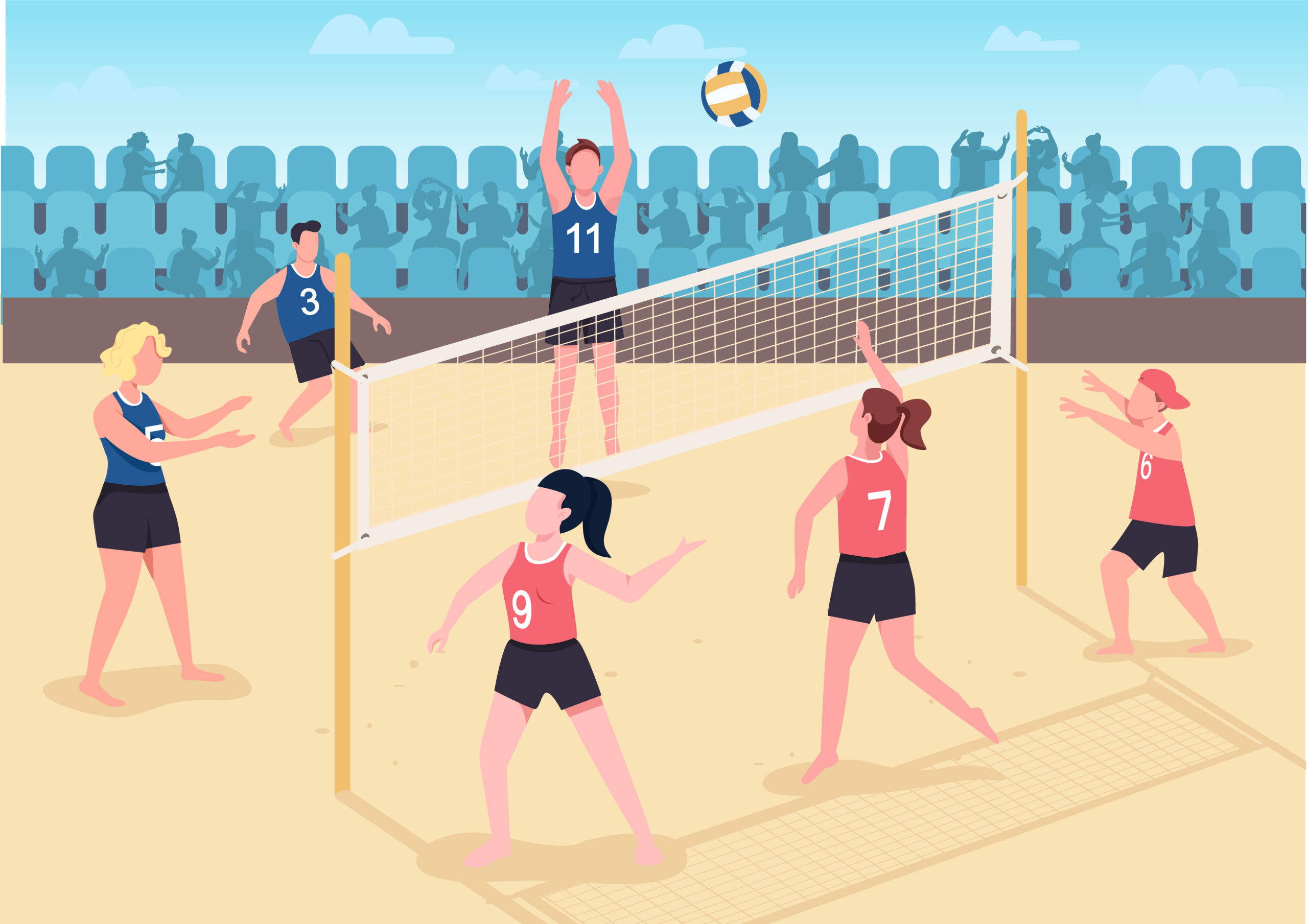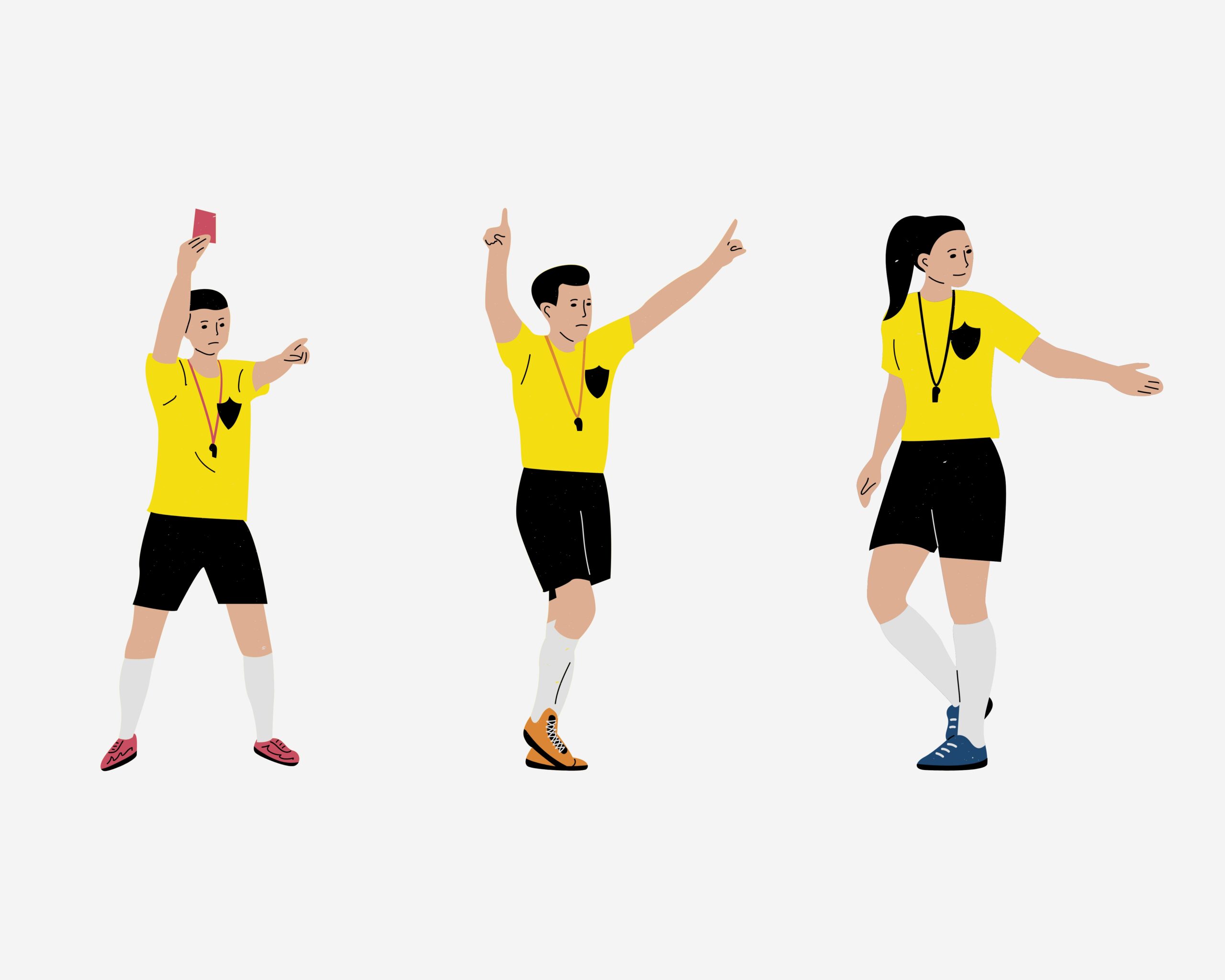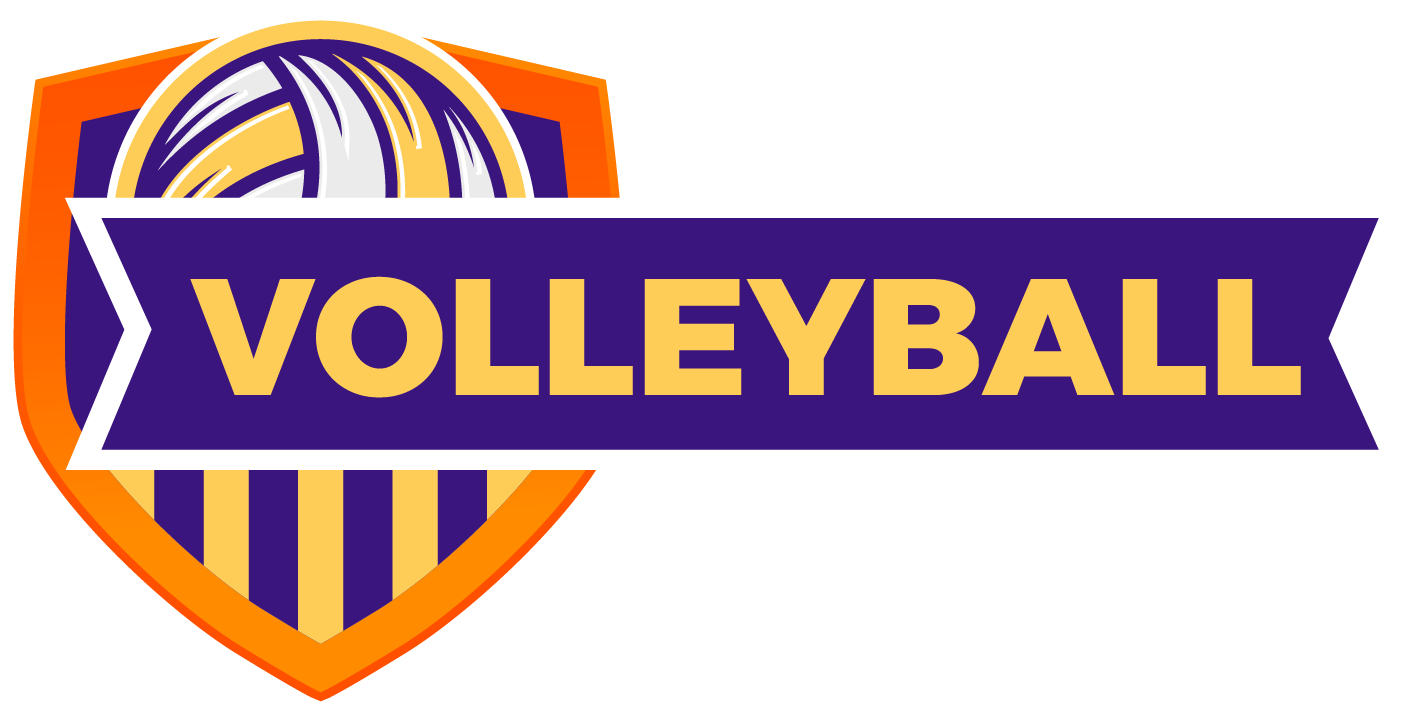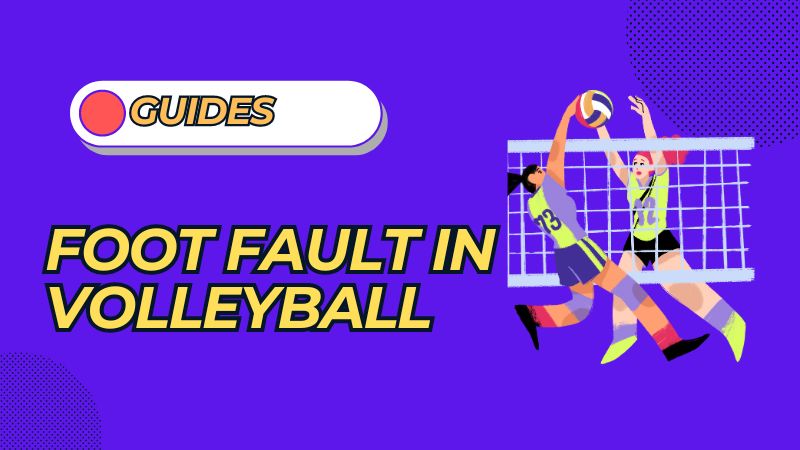Mastering the rules in volleyball is crucial, and one rule that often trips players up is the “Foot Fault.” This rule revolves around a server’s foot placement during the serve, a key moment that initiates the exciting rallies in a match.
A foot fault occurs when a player steps on or over the service line while serving the ball. It might seem minor, but a mistake can halt the game’s flow, handing the opposing team a point—something no team wants in a competitive setting.
The rule is more than a test of serving skills; it’s a test of precision and awareness. As the ball sails over the net, a small misstep on the service line can be a significant setback.
In the following, we’ll delve into the intricacies of a foot fault in volleyball, emphasizing why this rule is vital in maintaining the game’s integrity and competitive spirit.

What Is A Foot Fault In Volleyball?
A foot fault in volleyball signifies a breach of court boundaries, primarily concerning a player’s feet during specific game situations. There are two primary types of foot faults: service foot faults and centerline foot faults.
A service foot fault occurs when a server steps on or over the serving line before or while contacting the ball, crossing into the court prematurely. On the other hand, a centerline foot fault occurs when a player steps on or over the centerline, the line that bifurcates the court into two halves, during play.
Also, Read: Can You Block a Serve in Volleyball?
Why Is Foot Allowed In Volleyball?
Volleyball evolved to allow foot usage, enhancing gameplay in certain situations.
- Adaptation: Initially, volleyball was played only with hands and arms. However, the rules were amended to permit foot usage, embracing the sport’s dynamic nature and adding a layer of complexity and strategy.
- Strategic Play: Allowing foot usage enables players to keep the ball in play in desperate or challenging situations, making the game more engaging and competitive.
- Inclusivity: The foot rule, by extending the permissible body parts for ball contact, makes volleyball accessible and enjoyable to a broader player base, accommodating different skill levels and playing styles.
Who Can Call A Foot Fault?
In volleyball, foot faults are typically identified and signaled by line judges or referees.
These officials stand outside the court, closely monitoring the players’ and ball’s movements for potential fouls, ensuring adherence to the rules. When a foot fault occurs, the line judge’s or referee’s duty is to signal this violation, maintaining the game’s fairness and integrity.
Though seemingly straightforward, the rule of foot faults demands a keen eye from the officials and a thorough understanding from the players to ensure a fair and enjoyable game for all involved.

How To Call A Foot Fault In Volleyball
Calling a foot fault in volleyball is a crucial task, often assigned to the line judges or referees, to ensure fair play and adherence to the game’s rules. Here’s how it’s typically done:
- Observation: The officials closely observe the server’s foot placement during the serve. Any inadvertent touch or crossing of the end line or the service line by the server’s feet during the service is scrutinized.
- Signal: Once a foot fault is observed, the line judge or referee will immediately signal the fault. This signal is often a whistle blow, followed by a clear hand signal indicating the fault to the players, coaches, and audience.
- Foul Assignment: The server who committed the foot fault is then assigned a foul, and the opposing team is awarded a point as per the rules of the game.
- Jump Serve Exception: In a jump serve, officials allow the server to land on or over the service line post-serve, provided the jump initiates behind the service line.
Calling a foot fault is fairly straightforward but requires a keen eye and a quick reaction from the officials to maintain the game’s integrity. This rule enforcement ensures that all players adhere to the court boundaries, making the game fair and enjoyable for everyone involved.
Also, Read: Sets in Volleyball Game
What Happens When A Foot Fault Is Called?
A foot fault in volleyball is considered a form of foul, and its identification during a match is crucial for maintaining the integrity of the game. Here’s what happens when a foot fault is called:
- Point Awarded to Opposing Team: When a foot fault is identified, the point is awarded to the opposing team. This is a direct consequence that impacts the score and can potentially change the game dynamics.
- Service Loss: If the foot fault occurs during a serve, the serving rights are transferred to the opposing team. This scenario is known as a side-out, where the team on defense now gets the opportunity to serve and potentially score points.
- Foul Record: The foot fault is recorded as a foul against the player who committed it. Accumulation of fouls can have implications for players and the team, depending on the rules of the specific tournament or league.
- Game Continuation: The game continues after the foot fault is called and the necessary adjustments are made concerning point allocation and service rights. Players must shake off the error quickly and refocus on the ongoing match, showcasing sportsmanship and resilience.
The occurrence of a foot fault, though seemingly minor, carries significant implications. It alters the serving rights and influences the scoreboard, making adherence to the serving boundaries imperative for every player on the court.

Why Would The Referee Call A Foot Fault While You Are Serving?
Serving is pivotal in volleyball, setting the tone for the rally. However, a misstep during this crucial phase can lead to a foot fault. The referee or linesmen are on high alert during a serve, ensuring the rules are followed for a fair game. Here are the circumstances under which a referee would call a foot fault while you are serving:
- Incorrect Foot Positioning: The primary reason for a foot fault call is incorrect foot positioning. A foot fault is called if your foot crosses over or touches the service line before or while making contact with the ball.
- Referee’s Observation: The referee or line judges closely observe the server’s foot positioning during the serve. They are trained to detect violations, ensuring that the server’s feet do not cross the designated boundary before hitting the ball.
- Jump Serve Exception: The rules slightly differ if you are executing a jump serve. You can land on or over the service line post-serve, provided the jump initiates behind the service line.
Don’t Cross The Line
It’s a simple yet crucial rule—do not cross the line while serving. The line is a boundary that ensures fairness and order during the game. Crossing it prematurely is seen as gaining an unfair advantage over the opposing team, thus the strict enforcement of this rule.
- Awareness: Being mindful of your foot placement during the serve is essential to avoid committing a foot fault.
- Practice: Regular practice of serving behind the line can help avoid such faults, ensuring that you don’t provide an undue advantage to the opposing team.
The protocol of not crossing the line until the ball is in play is a fundamental volleyball rule, underscoring the importance of adherence to the game’s rules for fair and competitive play.
Also, Read: What Is a Dig in Volleyball?
What Is The Foot Rule In Volleyball?
The foot rule in volleyball is an aspect of the game’s rules that allows players to use their feet to contact the ball. This rule aligns with the broader regulation that players can use any part of their body to keep the ball in play.
When a player uses their foot to hit the volleyball, the ball must pass through one of the team’s three allotted touches before reaching the net.
Over the years, the rules regarding contact of the volleyball below the waist have evolved, clarifying that players are within their rights to use their feet, similar to using their hands or other body parts.
The allowance of using feet in volleyball has added strategic complexity to the game. Players can now use their feet for unexpected plays, creating an element of surprise and a new layer of strategy.
However, it’s crucial to note that while using the feet is allowed, contact with an opponent’s foot is not permitted and will violate the rules.
This rule encapsulates how volleyball has adapted over time, enhancing the gameplay experience while ensuring the competitive integrity and safety of the players.
Faqs
Can Your Foot Go Under The Net In Volleyball?
Yes, in volleyball, it is permissible for players’ feet to go under the net into the opponent’s space, provided they do not interfere with the play. However, the player’s foot must not completely step onto the opposing team’s court, and at least part of the penetrating foot must remain in contact with or directly above the center line.
What Is An Under Violation In Volleyball?
An Under The Net Violation occurs when a player crosses the center line underneath the net, moving into the opponent’s side of the court. If any part of the player’s body crosses this line, it will result in their team losing a point and possibly causing injury to the other team. However, if a hand or foot crosses the center line, the entire hand or foot must cross the line for this violation to be called.
What Is The Hand Signal Of Foot Fault?
The hand signal for a foot fault in volleyball is given by line judges or referees, who will raise a flag and wave it over their head while using their other arm to point toward the net antenna or the line where the foot fault occurred. In some scenarios, the referee points downward at the service line to indicate the violation. The official signal involves pointing to the end line with an open hand, palm perpendicular to the floor.
What Is Considered A Foot Fault?
A foot fault in volleyball occurs when a player steps on an illegal court area, gaining an unfair advantage. This can happen when the server steps over the serving line or when a player steps on or above the centerline. Foot faults can occur during any service attempt or normal play, resulting in a point awarded to the opposing team.
Can You Legally Hit A Volleyball With Your Foot?
Yes, hitting a volleyball with your foot in indoor and beach volleyball is legal. Players can use any body part to contact and hit the ball, though the rule regarding contact below the waist has evolved. However, serving the ball with your foot is strictly prohibited.
Can You Keep The Ball Up With Your Feet In Volleyball?
Absolutely! Utilizing your feet to keep the ball in play is a common and legal move in volleyball, often called a foot set. Players can use their feet to keep the volleyball off the floor and in play multiple times in a single rally, either defensively or to set up an offensive attack.
Conclusion
The foot foul in volleyball is crucial to maintaining the game’s integrity, ensuring that volleyball players adhere to the boundaries while serving. A foot fault occurs when a player steps over the service line during a serve or crosses the center line during normal play, potentially offering an unfair advantage to the offending team.
The foot rule, on the other hand, allows players to creatively use their feet to contact the ball, adding a layer of strategic complexity to the game. This rule has evolved, aligning volleyball with other sports where feet are used, like soccer, while maintaining its unique essence.
Understanding and adhering to these rules are fundamental for players, referees, and coaches, ensuring fair play, competitive balance, and the safety of all participants in this dynamic sport.

